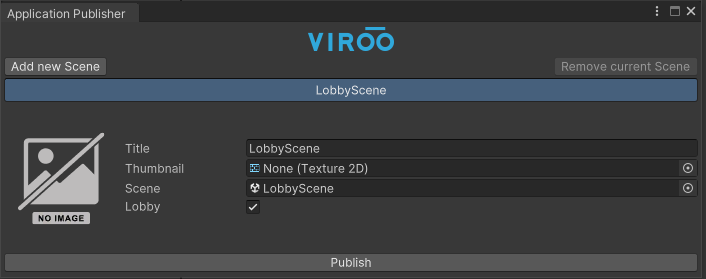Publishing your VIROO Application
The experience of publishing content to VIROO is similar to publishing a traditional Unity project executable.
You can open the Application Publisher window going to Window -> Viroo -> Application Publisher.
In this window you must add the Unity scenes that will be part of your VIROO Application. By default, it will display one scene and you can either add more scenes by clicking Add new Scene or remove existing scenes by selecting the scene you want to remove and clicking Remove current Scene.
For each of the scenes you will have to provide the following fields:
| Field | Description |
|---|---|
| Title | This will appear in the scene selection menu inside players. |
| Thumbnail | This image appear in the scene selection menu inside players. This field is optional. |
| Scene | The Unity scene containing the VIROO Scene. |
| Lobby | You must check which of your scenes will act as Lobby, the first scene to be displayed when this application is run. |
You can publish your VIROO Application by clicking on Publish.
When the Unity publishing process is finished, a Unity executable will be generated compressed in zip format. This executable cannot be executed in the traditional way, it must be uploaded to the content portal and executed from the VIROO Players of the VIROO Platform.
